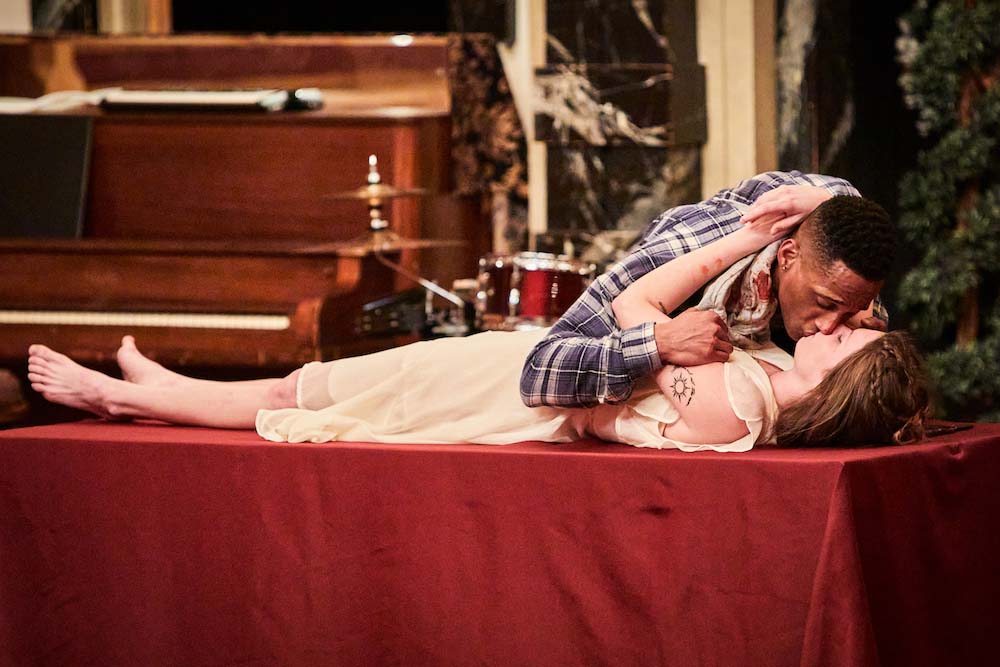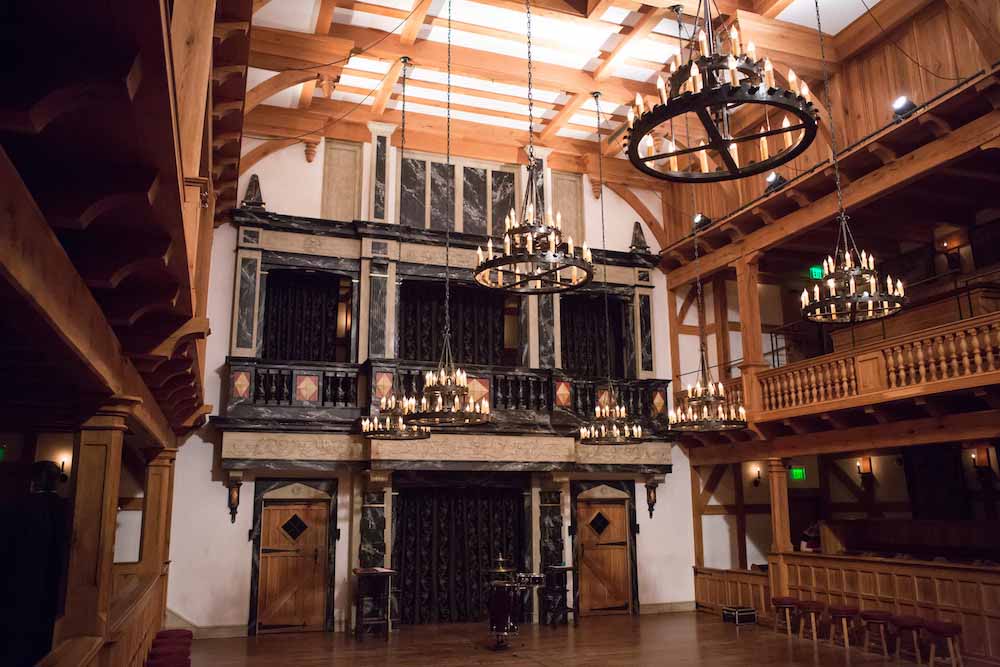In my personal experience as a young person growing up in Virginia, a trip to the American Shakespeare Center’s Blackfriars Playhouse almost felt like a part of the school curriculum. In middle school, I saw The Comedy of Errors; in high school, there was a trip to see Hamlet; in college, I had the joy of seeing a close friend in Julius Caesar. And after all this time, ASC can still entertain me like I’m 11 years old. I know this from their latest: Romeo and Juliet.

It’s safe to say that just about everyone knows the tale of the star-crossed lovers, and if not, I’ll not spoil the ending; I’ll just say it’s about two young lovers from feuding families. This iteration of the show is running through May 14 at the Blackfriars Playhouse, tucked away in the mountains of Staunton and modeled after Shakespeare’s Blackfriars Theatre (which burned down in 1666). ASC seeks to perform shows much the way they would have been when Shakespeare was alive. That means the lights stay on, the set is minimal, and the shows are played on a thrust-type stage with the audience on three sides. This doesn’t mean that ASC doesn’t like to experiment — they added some modern-sounding lines to Romeo and Juliet — but they are careful to adhere to Shakespearean principles that maintain the actors’ relationship with their audience.
With that in mind, it’s no wonder that on a snowy Saturday, smack in the middle of the day, ASC put on a spirited show that defied the stereotype of low-energy matinees. This began with the music sung and played by members of the cast, a staple of Blackfriars productions. Lovingly chosen, the pre-show tunes lyrically set the tone for Act I, and the vocalists, energetic as ever even at 2 PM, embodied the show’s budding passion, with an especially remarkable performance from Tevin Davis (Prince) that I may be talking about months from now. Then I was stunned to see the stage break out in one of the largest, most meticulously choreographed fight scenes I’ve seen (Benjamin Reed). It is a complete about-face where Montagues and Capulets are emphatically kicked in the face and thrown to the floor, and also, I would imagine, a similar setup to how Romeo and Juliet feel as they fall palms-first into love, only to learn each other’s last name.

It is this kind of relationship between the audience and Romeo and Juliet that the production sets up so well, as every actor brings their high-stakes character to life. Meg Rodgers, whose Juliet is a clever ball of fire, is both feisty and perceptive, and it is clear that she sees an equal match in Brandon Carter’s Romeo, as he captures both the hilarity and deep feeling in the character’s total conviction. Erica Cruz Hernández (Nurse) and Jessika D. Williams (Lady Capulet) are also standouts, stepping into two iconic characters and still bringing their own compelling, funny, heart-wrenching interpretations. Then, of course, there is Tevin Davis (Prince), who so commands the stage that he is impossible not to watch.
Each actor feels equally fresh in their role, but they also come back to punctuate the play with their own musical score, and props (Rhi Sanders, Thomas Prater, Sarah White), when the show calls for it. Piano and bowed bass ground the devastating second act, but it is all the more interesting to watch the actors watch each other as everything falls apart. It adds a new level of nuance to the play, reminding us that there is impact far beyond Romeo and Juliet alone, and also confirming that José Zayas (director) has breathed new life into the script, really moving us to root for the young lovers like never before.

Under his direction, I became so attached to the show, so attached to the characters, that I felt extreme joys and extreme sorrows, but I was also left wondering what it was all for. Romeo and Juliet triumphs by sweeping us up in the naive, lusty feelings of young romance, then revealing itself as a true tragedy, but this version felt like it halted with the tragic twist to leave me pondering what I should take away. Is there a greater purpose to the play? What was the point? Again, it’s rather similar to part of what Juliet’s and Romeo’s families may be feeling at the end of the show. It is that subtle impact that makes Zayas’s Romeo and Juliet so compelling, and so worth seeing. Even though the tale feels old as time at this point, it still leaves its audience with feelings to unpack, with nuances to talk about, and in doing so makes the lofty world of Shakespeare more reachable.
Running Time: Two hours 10 minutes with one intermission.
Romeo and Juliet, a part of American Shakespeare Center’s Actor’s Renaissance Season, plays through May 14, 2022, in repertory with The Comedy of Errors opening March 31, 2022. All performances are at the Blackfriars Playhouse, 10 South Market Street, Staunton, VA. For information and tickets ($27–$60, with an option to sign up for the pay-what-you-will club), visit americanshakespearecenter.com.
The Romeo and Juliet program is online here (click on “cast list” and on “cast, creative team, and staff”).
COVID Safety: Proof of vaccination and masking are required. American Shakespeare Center’s complete Safety Visitor’s Guide is here.

SEE ALSO:
American Shakespeare Center gets new AD and sets new season (news story about Brandon Carter and season announcement)




